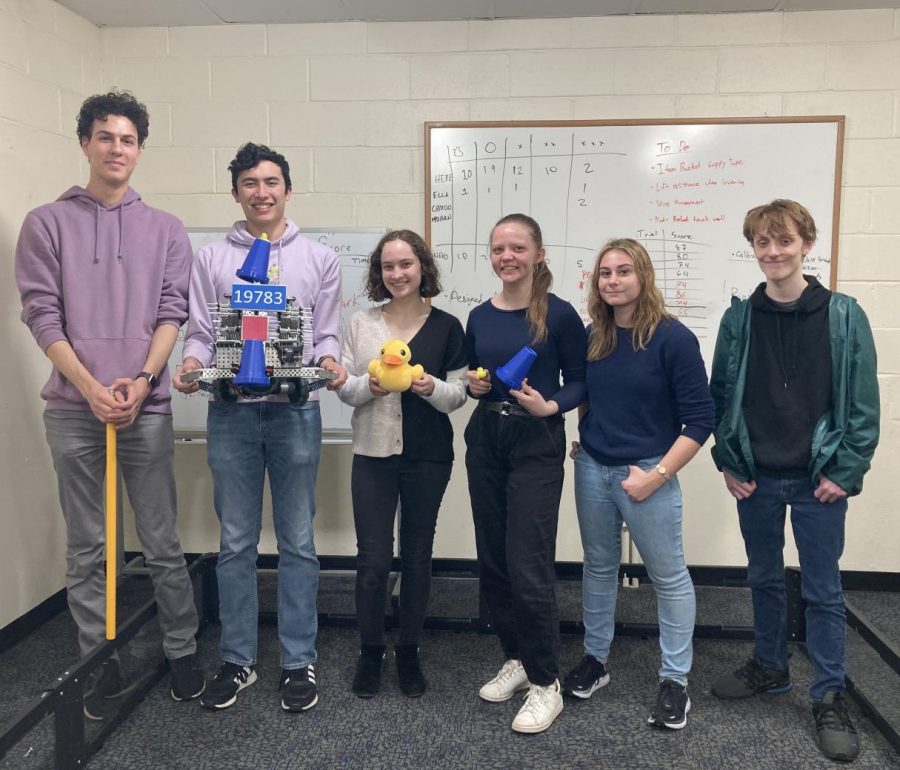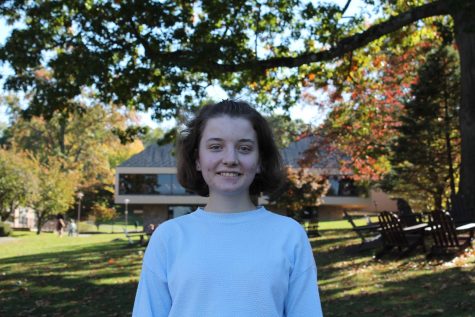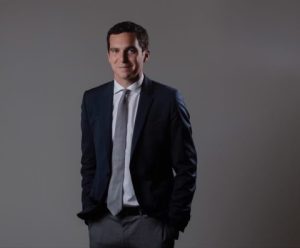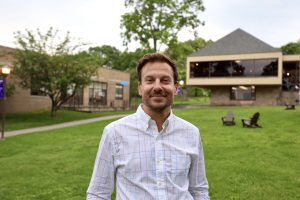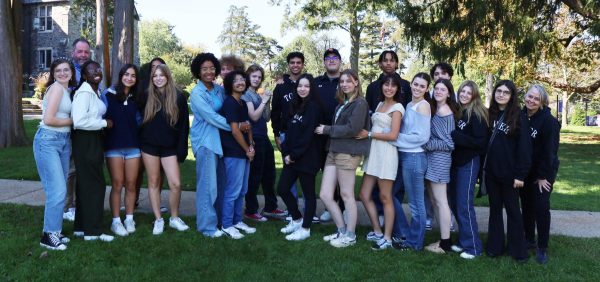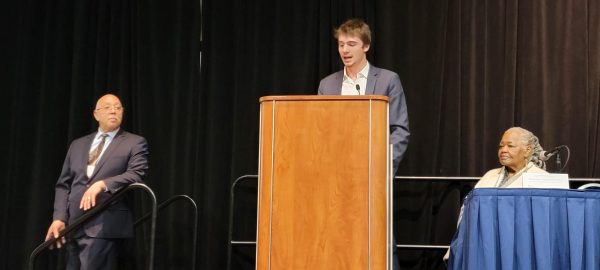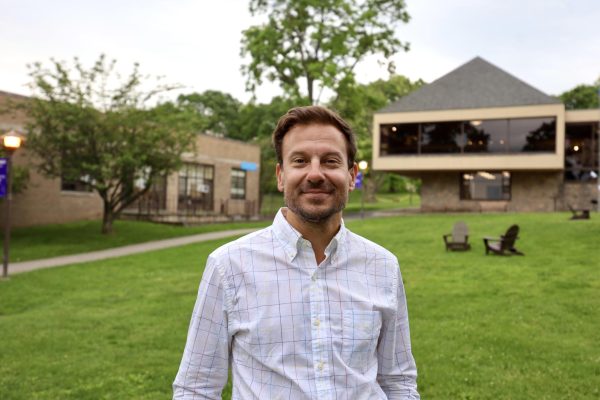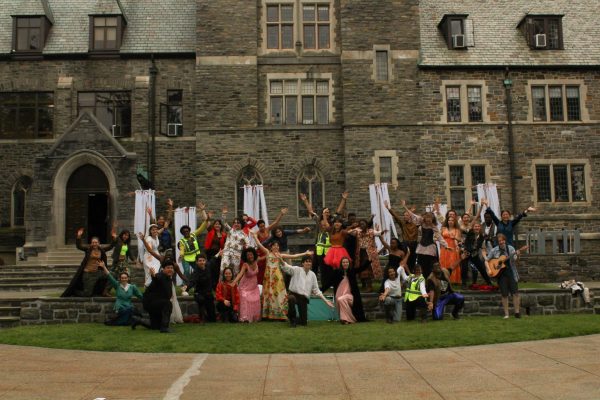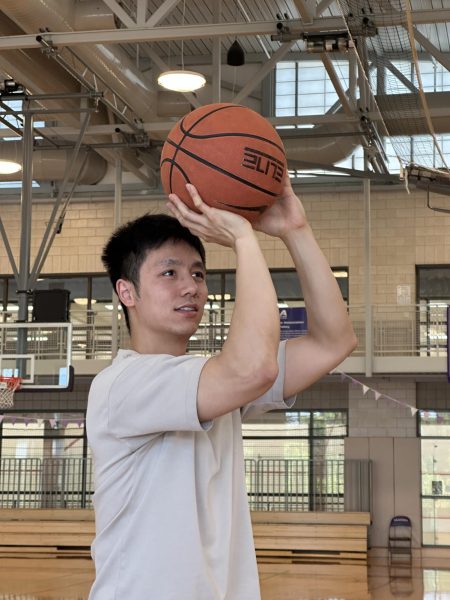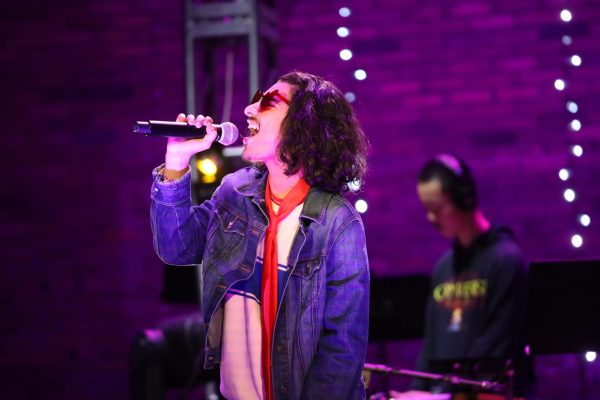Masters robotics team overcomes challenges and triumphs in FIRST Tech Challenge
Despite outdated materials, time constraints, and limited experience, Nate Borwick ’23, Ella Dundas ’23, Nataliia Kulishova ’23, Sam Scheinbach ’23, Leo Shatzoff ’23, and Rebecca Troy ’25 managed to create a robot with a triangular chassis and a spring-loaded claw and place third in the Design category of the FIRST Tech Challenge.
March 14, 2023
Despite numerous setbacks, the Masters robotics team managed to present their robot at the FIRST Tech Challenge at East Fishkill, New York and even won third place in the Design category of the award ceremony. Out of all teams, the Masters team was the only one who hadn’t already competed this school year. In fact, this competition has been the first in-person one for the team since the start of COVID-19, and has proven to be quite competitive with 28 teams competing for 12 hours.
The FIRST Tech Challenge consists of five matches per team, each with an autonomous section when a robot performs a pre-programmed mission on its own and a telop section when a team operates the robot with remote controls. The main task for the teams was to build a robot that would be able to pick up the cones and put them on different level junctions. In addition to that, it should respond to specific signals and autonomously park at the requested spot.
For Ella Dundas ’23, the team’s oldest member, the most memorable part of the competition was the third match, when the team replaced their not-working batteries with the new ones that they borrowed from other participants. Dundas said she felt very excited to see the full potential of their robot when it had all working parts.
“Our autonomous code worked really well and got us to exactly where we needed to be. And we actually got more points than the robot before us,” Dundas said. “And what was really exciting about that game was there’s an element where, in the last 30 seconds, you can cap one of the polls with a specific capping element that you design, and that will give you bonus points. Sam, the driver, capped it when it was like a millisecond to spare. We made it [in the very last seconds] and that was a really good moment.”
Besides Dundas, Sam Scheinbach ‘23, Rebecca Troy ‘25, and Leo Shatzoff ‘23 worked on the hardware of the robot, while Nataliia Kulishova ’23 and Nate Borwick ’23 wrote the code. The robotics faculty advisor Stone Yan said, “There’s a lot of collaboration [between the coding and building teams]. When something happens, it’s not just one team’s problem. Both teams can do things to fix the problem. As they’re working, they’re talking and bantering, and it’s generally a very positive environment.”
Since the start of the academic year, the team experienced several challenges. Many of the materials they needed were outdated. Moreover, with the ACR requirement not covering robotics, very few underclassmen were able to join the team this year or receive training in the years prior. Most of the older members, however, were only in their first or second year of robotics and had not had much experience building robots before. Out of the six members, half were new to the team. The time restraints raised another concern.
“Another challenge is timewise, we can only spend about three and a half hours a week doing robotics, unless, sometimes closer to the competition, we will come in early during club time, too,” Dundas said. “But other teams are spending upwards of 10 hours a week on their robots. So we’re at a big disadvantage because we just have much less time that we’re capable of working on.”
We really think outside the box. We tried to have a creative robot because we don’t have enough time to make it absolutely perfect like the other teams do. So we differentiate ourselves with our unique designs. — Ella Dundas '23
Despite their many struggles, the students managed to get through all of the competition requirements. Yan said that the team’s creativity helped them to compensate for their limited resources. For example, to minimize the robot’s weight, they wanted to get the least number of motors possible and decided to build the robot with a spring-loaded claw and triangular chassis (base frame).
Several years before, the Masters robotics team had already tried to make a robot with such a chassis, but struggled to fit all the elements on top of a triangle. For three years, older members “left” it to Dundas in the yearbook Senior Will Statement.
Now a senior herself, Dundas said she feels happy to finally make a triangular-shaped robot. Although both the triangle chassis and spring-loaded claw complicated the coding and building process, such a design made the end result even more rewarding.
“We really think outside the box,” Dundas said. “We tried to have a creative robot because we don’t have enough time to make it absolutely perfect like the other teams do. So we differentiate ourselves with our unique designs.”



